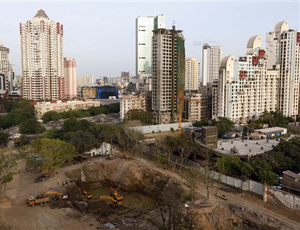
Corruption, regulatory bottlenecks and other hurdles have slowed down the pace of infrastructure development in India. Having just released their current budget, however, lawmakers in India are making a strong effort to reach out to investors to help jump-start construction activity.
India is "recognizing that communication with investors should be improved to remove any apprehension or distrust, including fears about undue regulatory burden," says P. Chidambaram, India's finance minister, who introduced the country's latest fiscal-year budget on Feb 28.
Of the emerging countries, only China and Indonesia grew faster than India in 2012-13. China, whose latest five-year plan calls for $1 trillion in infrastructure spending, again is projected to grow faster than India this year.
Recognizing that a lack of funding had recently stalled infrastructure projects, Chidambaram says there is a "need for new and innovative instruments to mobilize funds for investment in infrastructure sector." Measures being introduced include infrastructure debt funds, as well as heavy road building in northeastern states as part of an extension to Myanmar. The World Bank and Asian Development Bank are providing assistance for those projects.
Total expenditure for this year’s budget is $309 billion, a 16% increase from the previous year’s total of $263 billion. Defense spending, the largest portion of the budget, comprises roughly $37 billion, a 4.5% increase from last year. The next largest outlay and also the largest year-on-year increase went to the Ministry of Rural Development, with a 46% increase to $15 billion. There is no separate figure for infrastructure
The government has projected GDP growth for the upcoming fiscal year to be between 6.1 and 6.7%. While this is up from the current fiscal year’s decade-low of 5%, it still falls short of the 8.9% average achieved in the years prior to the 2008 global financial crisis.
The ambitious budget calls for 3,000 km of road projects in Gujarat, Madhya Pradesh, Maharashtra, Rajasthan and Uttar Pradesh to be awarded in the first six months of 2013-14. "The challenge is how to convert these targets into implementable plans," says R. Shankar Raman, CFO of L&T Group. "I don't know where the money is going to come from."
The credibility of a government plagued with inaction has left many construction companies skeptical. What's more, investors may decide to wait on projects until India's 2014 election is over, which could set back development by another two years.
"We envisage projects held up for the past two years, such as the industrial corridors, might restart," Arvind Nanda, CEO of Interarch Building, tells ENR. "However, new activity in power and steel is unlikely to happen as new investors will not come to India till the elections are held."
Many projects are stuck because of land issues and environment clearances, Nanda adds. Further, a new factor is the rise of political activists holding up construction.


Post a comment to this article
Report Abusive Comment